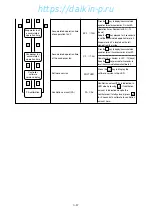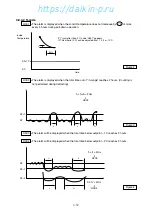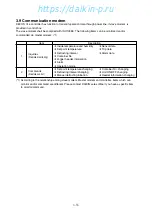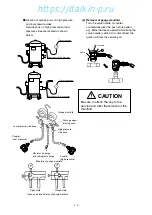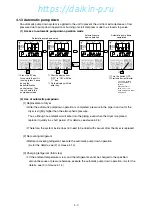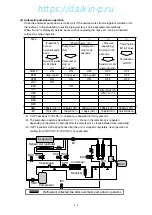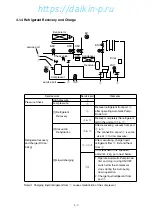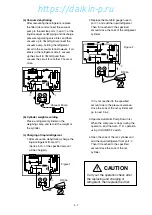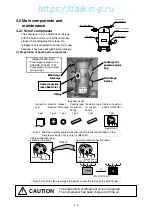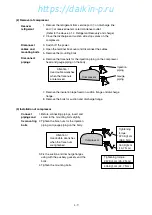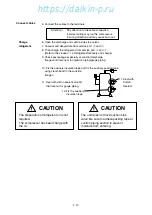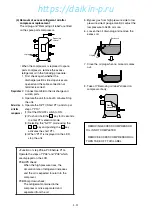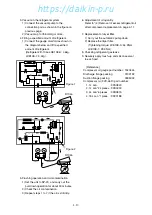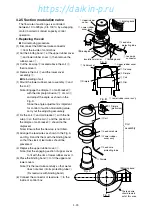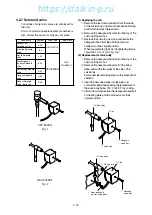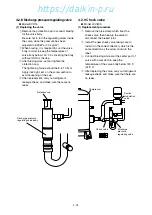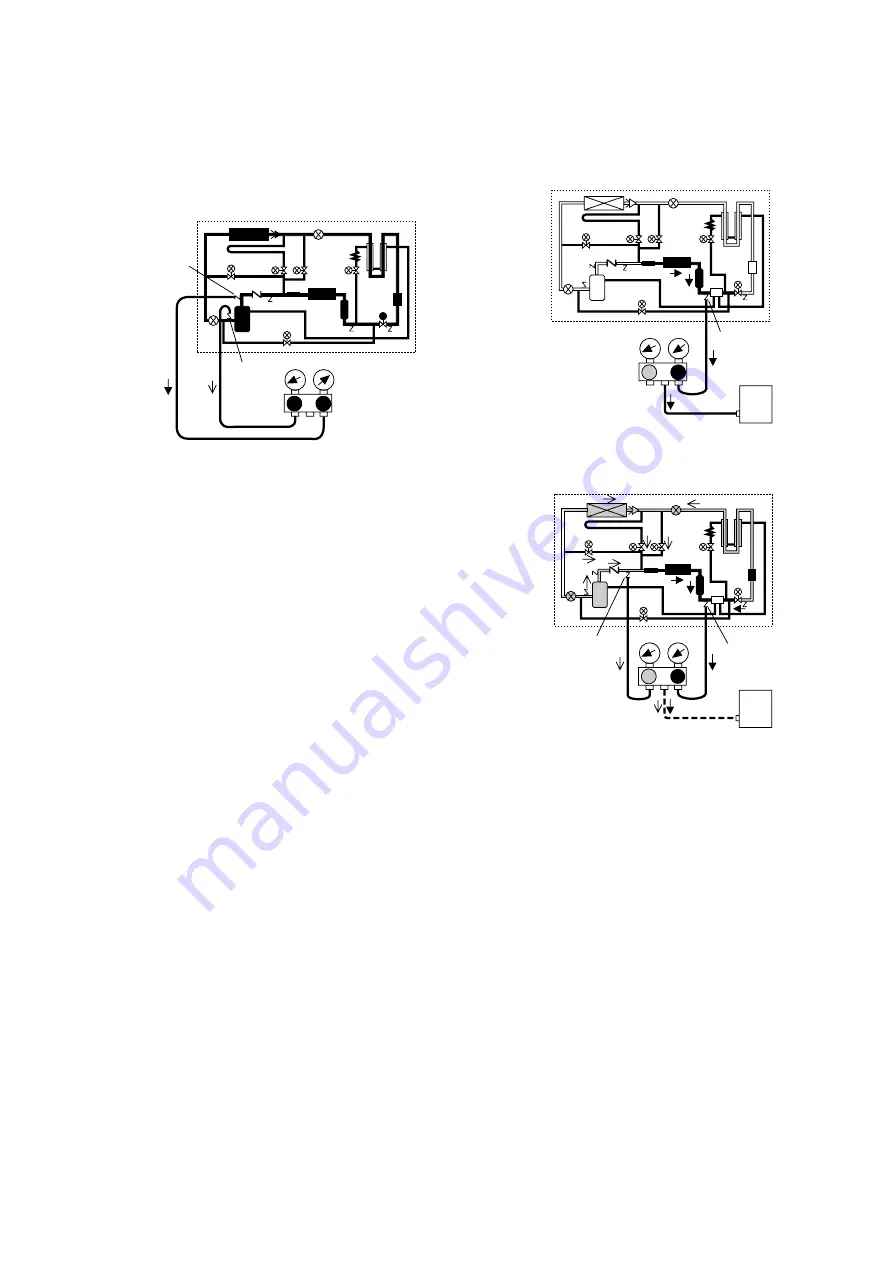
4-6
(1) Operation Pressure Check
Check high pressure from the service port
w
on the compressor discharge. Check low
pressure from the service port
q
on the
compressor suction.
(2) Recovery non-condensable gas
If the air or other non-condensable gases
are present in the refrigeration system, they
will gather in the condenser and the
pressure inside the condenser will rise
significantly and the thermal conductivity of
the condensing surface will be decreased,
resulting in deterioration of refrigeration
performance. Therefore, it is very important
to eliminate the non-condensable gases.
If the discharge pressure is abnormally high
and the pressure is not normalized, check
whether the air or other non-condensable
gases are present by following the
procedure below.
●
After carrying out the automatic pump-
down operation to collect the coolant in the
liquid receiver, stop the unit once. Operate
the condenser fan in accordance with the
condenser fan check procedure included in
the manual check procedure, and wait until
the cooling air inlet and outlet
temperatures become equal. Non-
condensable gases are present if there is
any difference between the saturation
pressure and the condensation pressure
corresponding to the temperature of the
cooling air.
(3) Refrigerant Recovery
q
Operate Automatic Pump Dpwn.
w
Recover refrigerant from port
t
.
e
Recover completely refrigerant left in the
unit from ports
r
&
t
.
t
w
q
LP
HP
t
r
(4) Vacuum-dehydrating, and refrigerant /
charging
If all the refrigerant has leaked out and air is
intermixed in the refrigeration circuit, remove
the cause of trouble and carry out vacuum-
dehydrating. Then charge the specified
amount of refrigerant.
[Required tools]
1. Refrigerant cylinder (content of 20kg)
equipped with joint for HFC134a
2. Gauge manifold with quick joints
3. Weighing scale (up to 50kg)
4. Vacuum pump
https://daikin-p.ru

